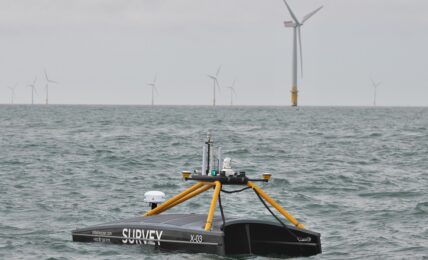EU member states in the European Council announced today the adoption of new legislation, strengthening emissions standards for heavy duty vehicles in the EU, including a requirement for a 90% reduction in CO2 emissions from heavy duty trucks and buses by 2040.
The announcement by the EU Council marks the last decision-making step towards the adoption of the new regulation, following the approval last month of the legislation in the European Parliament.
The adoption of the legislation follows an initial proposal by the European Commission in February 2023 for a revision of the CO2 emissions standards for heavy duty vehicles (HDVs). Trucks and buses account for over 6% of total greenhouse gas (GHG) emissions in the EU, and more than 25% of GHG emissions from road transport.
The Commission proposed the revisions as part of its ‘Fit for 55’ roadmap – the EU’s proposed strategy to cut greenhouse gas (GHG) emissions by 55% by 2030, compared to 1990 levels. According to the Commission, in addition to mandating a reduction in emissions from the road transport sector, the new rules aim to ensure an increasing supply of new zero-emission vehicles (ZEVs) to the market, and provide a long-term signal to drive investment in zero emission technologies and recharging and refuelling infrastructure.
The new rules maintain the EU’s current target for a 15% reduction in CO2 emissions from heavy duty trucks, and raises the existing 2030 target from a 30% reduction to 45%, while introducing a series of new targets over a longer-term horizon, including a 65% emissions reduction from 2035, and a 90% emissions reduction from 2040.
An agreement between the EU Council and Parliament in January expanded the scope of the regulation, subjecting nearly all HDVs to emissions reduction targets including smaller trucks, urban buses, coaches and trailers, while allowing exemptions such as small-volume manufacturers and vehicles used for mining, forestry and agriculture, and vehicles for use by the armed forces, fire services, or in civil protection, public order and medical care.
The January agreement also extended the scope of the regulation to vocational vehicles such as garbage trucks or concrete mixers from 2035, and introduced a 2035 100% zero emissions target for urban buses, with an intermediate 90% 2030 goal.
The newly adopted regulation also directs the EU Commission review the effectiveness and impact of the amended regulation in 2027, including evaluating the possibility of developing a common methodology for the assessment and reporting of the full lifecycle CO2 emissions of new HDVs.



